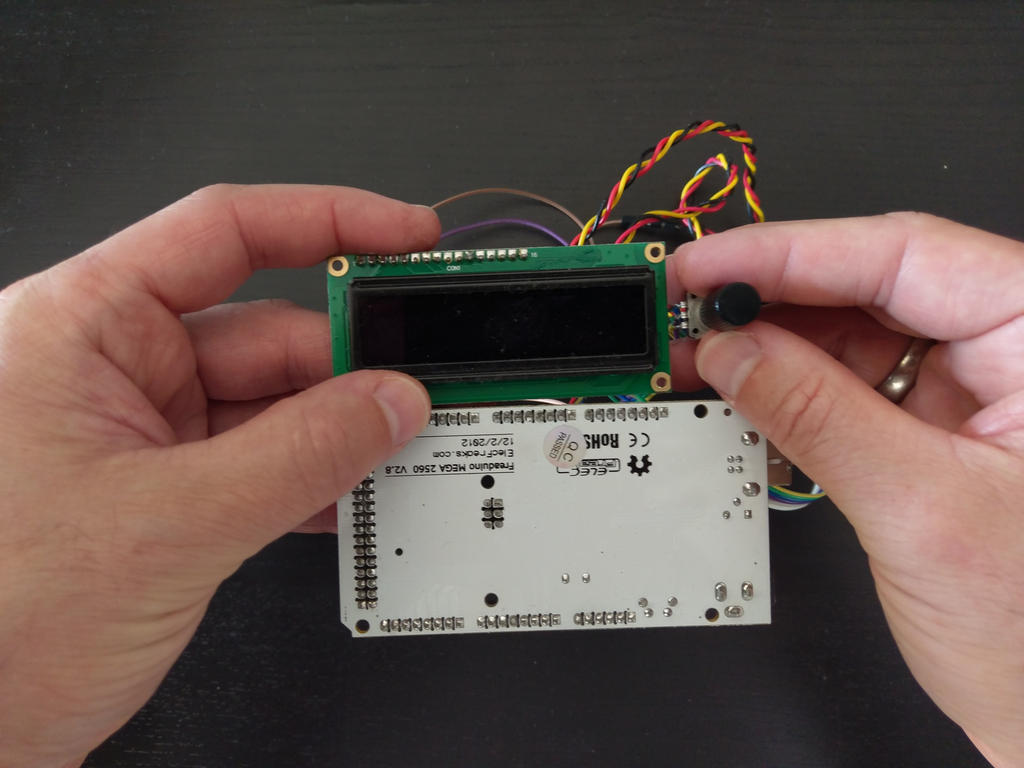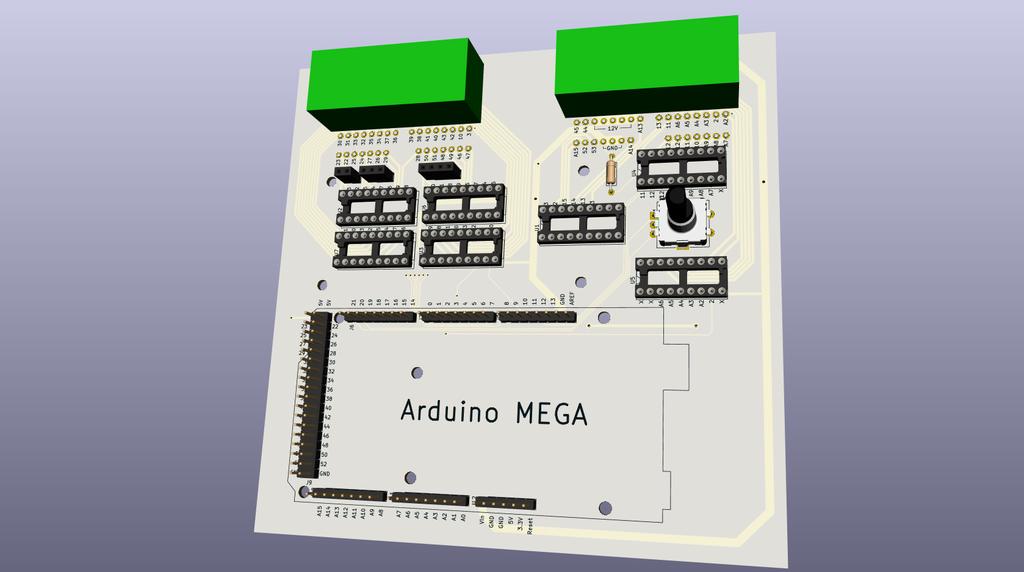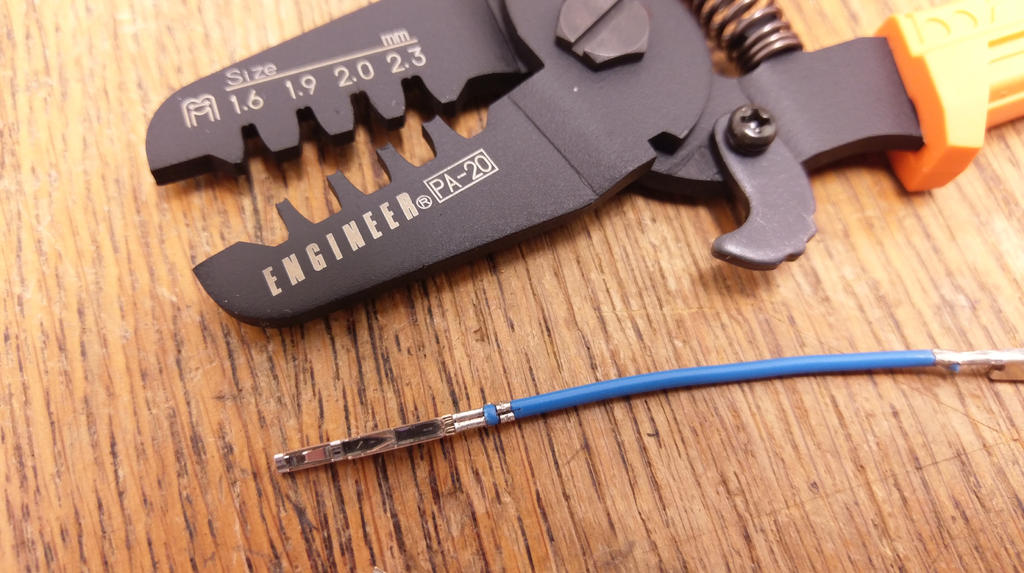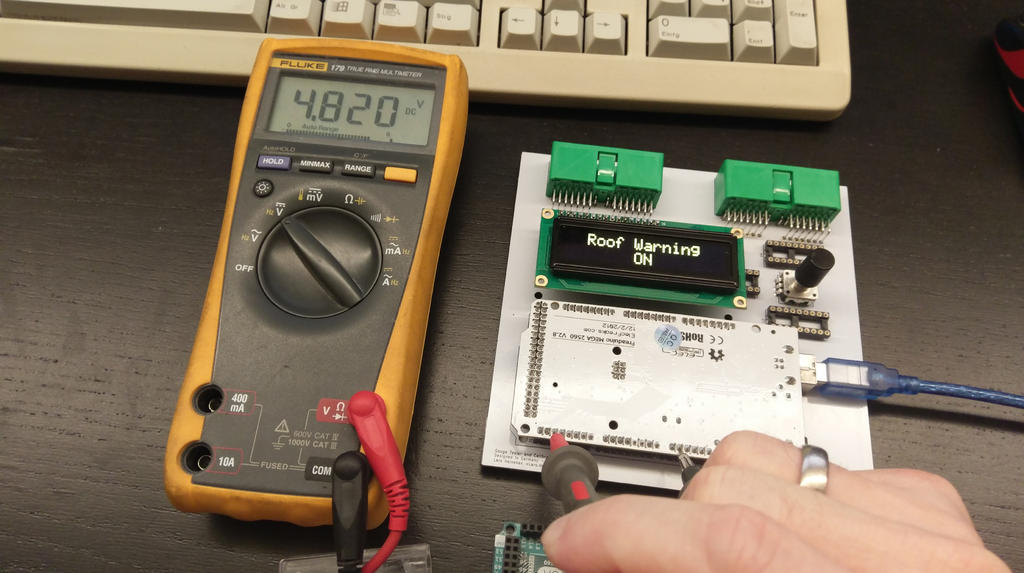It's been a few months since the first Gauge Cluster Tester was finalized. It has served me well during capacitor replacement but it's also limited in certain ways. A significant amount of manual work is required for every build (drilling, printing, cutting, etc.) and only six of the many functions of the cluster are supported.
The good experience with the Open Source tool KiCAD for circuit design and layout in combination with the ease of getting professional PCB manufactured motivated me to make a second, more sophisticated, try with the following key requirements:
Due to the sheer amount of pins, an Arduino MEGA became necessary. Connection to the cluster was to be realized by means of the original green JAE connectors. These are surprisingly economic considering their price and amount of pins they carry.
It was decided rather quickly that the design should be without the need for a case as these are notoriously hard to manufacture unless you're the owner of a 3D printer (which I am not). The tester should therefore centre around a robust PCB carrying all the components.
Regarding the user interface there were some diverse discussions between engineering friends of mine until it was settled to use a 2x16 character LCD together with a turn-and-push rotary encoder. Often used together they provide an easy-to-figure-out way of selecting and changing values on the display while keeping the load for the microcontroller acceptable (in comparison to a graphical display).

View attachment 14101
Unfortunately these LCDs tend to have a poor viewing angle and a slow response. Both makes for an unpleasant user experience. Therefore compatible OLED display was chosen, which is a true joy to look at and still being affordable. As every idea requires at least a proof of concept before making a decision, that was carried out by connecting everything to an Arduino and writing a prototype software:
An element is selected by turning the knob. Pressing the knob allows to change its value, either directly (if it's a switchable element like an indicator light) or by turning the knob again (like RPM or speed). Should be easy to figure out, even without a manual. After the main components are decided, it's time to arrange them roughly and see about the form factor. The result was in an acceptable range even including the JAE connectors.
As there are two different pin-outs of the gauge cluster (1991-1995 and 1996-2005), as well as different functions depending on build year and options (AT, Tip-Tronic, Targa, ..) carefully preparation of a pin table is essential. Buying the Honda NSX Electrical Trouble Shooting Manual from 1997 and 1992 helped to gather the required information.
Almost all of the 60 pins available at the cluster are in use and realize the following functionality (1997)
To realize all these in a truly universal fashion would require output drivers that can supply battery voltage, ground at currents up to 2 Ampere, PWM controlled by the microcontroller and even work as input. Such a realization would be possible but quite expensive and certainly colliding with the requirement of a small form factor as well as ease of build-up.
Based on the pin analysis, it turned out that it's sufficient to provide roughly 16 battery voltage and 40 ground drivers with currents up to about 100 mA. These are available as integrated circuits with 8 outputs each, making it just seven components on the PCB. The output pins provided by the cluster were decided not to be considered in this build.
Next is the PCB layout. As two different pin-outs need to be supported, but the output drivers are fixed to either supplying battery voltage or ground, there are going to be two different sets of connection cables. This, on the other hand, allows to optimize the layout as the cable will take care about connecting the correct pins between cluster and tester.
It took a few months to realize this level of complexity (and gave me the chance to learn a lot about the tools involved). The result is the following layout on a 140 x 140 mm PCB with two layers:


3D simulation of the PCB
While the PCB was being manufactured (which took about two weeks) a crimping tool for the JAE connectors was selected and obtained. Professional equipment found for this task was exceptionally expensive and out of budget for such a project. The Japanese company ENGINEER was found to provide a hand crimp tool that supports the rather exotic 2.0 mm die size: The PA20. It's of decent quality and has served me well so far.

Tool and Result
After the PCB arrived the components were added and soldered. It felt fascinating how exact the parts fitted - the 30 pin JAE connectors, for example, just dropped-in. No comparison to hand-made and drilled PCBs. The display and the rotary encoder worked right away and changing the output of the Arduino's pins could be verified using a multimeter.

so far, so good
Up to this point, everything went rather smooth but the last 10 % towards the final result are said to be the hardest. After adding the output drivers, getting the cluster from the car and staring to build the connection cable as well as extending the software, several issues came up. These are going to be addressed in the next update to this thread, where each of the clusters functions are going to be show-cased.
Nevertheless, the concept is proven to work and just a few minor changes are going to be required to get it fully running.
During work on the project it became clear that the hardware itself is probably able to drive a range of 1990s gauge clusters from Honda and potentially other vehicles manufactures as well. Unfortunately I don't have any of those to build matching cables and software but it might be a nice collaboration project in case there is interest.
Note
Don't hesitate to let me know you impression of the project as well as ideas on how to improve it further. Especially the software is highly flexible and even making the tester controllable via USB is a possibility (even though I'm not planning to build a super-car simulator yet). Especially interesting are typical use-cases during servicing and/or calibration of the gauge cluster.
The good experience with the Open Source tool KiCAD for circuit design and layout in combination with the ease of getting professional PCB manufactured motivated me to make a second, more sophisticated, try with the following key requirements:
- Support of all gauge cluster functions
- Simple and intuitive user interface
- Small form factor
- Quicker build-up
Due to the sheer amount of pins, an Arduino MEGA became necessary. Connection to the cluster was to be realized by means of the original green JAE connectors. These are surprisingly economic considering their price and amount of pins they carry.
It was decided rather quickly that the design should be without the need for a case as these are notoriously hard to manufacture unless you're the owner of a 3D printer (which I am not). The tester should therefore centre around a robust PCB carrying all the components.
Regarding the user interface there were some diverse discussions between engineering friends of mine until it was settled to use a 2x16 character LCD together with a turn-and-push rotary encoder. Often used together they provide an easy-to-figure-out way of selecting and changing values on the display while keeping the load for the microcontroller acceptable (in comparison to a graphical display).
A rough idea
Unfortunately these LCDs tend to have a poor viewing angle and a slow response. Both makes for an unpleasant user experience. Therefore compatible OLED display was chosen, which is a true joy to look at and still being affordable. As every idea requires at least a proof of concept before making a decision, that was carried out by connecting everything to an Arduino and writing a prototype software:
As there are two different pin-outs of the gauge cluster (1991-1995 and 1996-2005), as well as different functions depending on build year and options (AT, Tip-Tronic, Targa, ..) carefully preparation of a pin table is essential. Buying the Honda NSX Electrical Trouble Shooting Manual from 1997 and 1992 helped to gather the required information.
Almost all of the 60 pins available at the cluster are in use and realize the following functionality (1997)
- Temperature, Oil Pressure and Fuel Gauge (resistance controlled)
- Illumination (PWM controlled)
- ~30 indicators lights (various controls via battery voltage and ground)
- Shift Indicator Display (battery voltage controlled logic)
- Roof Lock Logic (ground controlled logic input and output)
- Courtesy Light Logic (ground controlling output)
- Neutral/Park Logic (ground controlling output)
- Speed gauge (battery voltage rectangle)
- Tachometer (ground controlled rectangle)
To realize all these in a truly universal fashion would require output drivers that can supply battery voltage, ground at currents up to 2 Ampere, PWM controlled by the microcontroller and even work as input. Such a realization would be possible but quite expensive and certainly colliding with the requirement of a small form factor as well as ease of build-up.
Based on the pin analysis, it turned out that it's sufficient to provide roughly 16 battery voltage and 40 ground drivers with currents up to about 100 mA. These are available as integrated circuits with 8 outputs each, making it just seven components on the PCB. The output pins provided by the cluster were decided not to be considered in this build.
Next is the PCB layout. As two different pin-outs need to be supported, but the output drivers are fixed to either supplying battery voltage or ground, there are going to be two different sets of connection cables. This, on the other hand, allows to optimize the layout as the cable will take care about connecting the correct pins between cluster and tester.
It took a few months to realize this level of complexity (and gave me the chance to learn a lot about the tools involved). The result is the following layout on a 140 x 140 mm PCB with two layers:
Circuit Design and Layout
After printing it 1:1 on paper, the parts (that have to be sourced from at least three different sellers) could be placed to check the correct dimensions before ordering the PCB. Everything worked-out fine at the the order was placed.
3D simulation of the PCB
While the PCB was being manufactured (which took about two weeks) a crimping tool for the JAE connectors was selected and obtained. Professional equipment found for this task was exceptionally expensive and out of budget for such a project. The Japanese company ENGINEER was found to provide a hand crimp tool that supports the rather exotic 2.0 mm die size: The PA20. It's of decent quality and has served me well so far.
Tool and Result
so far, so good
Up to this point, everything went rather smooth but the last 10 % towards the final result are said to be the hardest. After adding the output drivers, getting the cluster from the car and staring to build the connection cable as well as extending the software, several issues came up. These are going to be addressed in the next update to this thread, where each of the clusters functions are going to be show-cased.
Nevertheless, the concept is proven to work and just a few minor changes are going to be required to get it fully running.
During work on the project it became clear that the hardware itself is probably able to drive a range of 1990s gauge clusters from Honda and potentially other vehicles manufactures as well. Unfortunately I don't have any of those to build matching cables and software but it might be a nice collaboration project in case there is interest.
Note
Don't hesitate to let me know you impression of the project as well as ideas on how to improve it further. Especially the software is highly flexible and even making the tester controllable via USB is a possibility (even though I'm not planning to build a super-car simulator yet). Especially interesting are typical use-cases during servicing and/or calibration of the gauge cluster.
Last edited:








